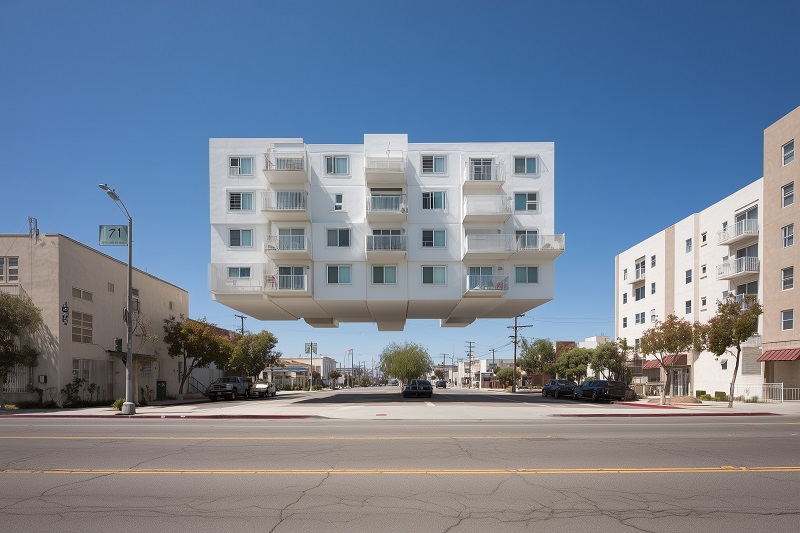
About one in five Santa Monica residents lives in a condo. Some own, some rent, some sit on the HOA finance committee, others barely know there is one. None of that matters when the ground shakes. The quake doesn’t check your deed before rattling your dishes. And like it or not, everyone’s future is tied up in the same opaque web of earthquake insurance.
It’s not exactly cocktail-party material. The jargon is thick, the math confusing, and what’s supposed to bring peace of mind often breeds more anxiety. In an HOA, that anxiety compounds: your own financial security is welded to the decisions of people whose names you might not even know.
So the policy sits there, buried in HOA paperwork, ignored until the day it isn’t. That’s the odd bargain of condo life in earthquake country. You live not just on shaky ground, but on shaky agreements, trusting that both will hold when it matters.
The Deductible That Ate L.A.
The trouble begins with the deductible. In most forms of insurance, a deductible is a modest obstacle: five hundred dollars to repair a fender, a thousand to replace a refrigerator that gave up too soon. The numbers sting but do not threaten bankruptcy. Earthquake insurance for condominiums works differently. In the HOA’s earthquake insurance policy, a “ten percent deductible” does not mean ten percent of the damage. It means ten percent of the building’s entire insured value.
A ten-million-dollar building with a ten-percent deductible produces a one-million-dollar bill before the insurer writes its first check. That sum is divided among residents according to the formulas of their HOA, formulas once scanned casually during escrow and since forgotten. The reminder comes after the quake, in the form of a “special assessment.”
Special assessments are democracy’s version of the collection notice. They appear when the HOA board decides (or discovers) that reserves are insufficient and costs must be shared. The logic is sound; the effect is punishing. Residents have little choice but to contribute.
There is, however, a species of insurance that covers this particular disaster-within-a-disaster: “loss assessment coverage.” It pays the owner’s share of the deductible imposed by the earthquake policy. It is, in other words, insurance for insurance. Without it, the check to cover the deductible comes directly from the homeowner’s account. With it, the account remains intact, though the sense of absurdity deepens.
California has attempted to insert guardrails. The Davis–Stirling Act, which governs common-interest developments, limits special assessments without a membership vote to five percent of the HOA’s annual budget. But earthquake deductibles often exceed budgets. An eight-million-dollar building with a ten-percent deductible can owe eight hundred thousand dollars. Few associations budget at that scale. The result is that repair costs, following a quake, are often subject not to board decision but to membership referendum.
This is governance at its most precarious: a body of traumatized homeowners, some displaced, some financially wounded, asked to vote on whether to repair their homes at extraordinary cost. The alternatives, higher premiums for lower deductibles, lower premiums for higher deductibles, are themselves often political, fought out in HOA meetings where the desire to save now collides with the fear of paying later.
The marketplace complicates things further. Traditional insurers, bound by California regulation, have been retreating from the state’s most volatile markets. In their place are “excess and surplus lines” carriers, out-of-state companies exempt from many ordinary regulatory requirements, permitted to adjust rates at will, not backed by California guarantee funds. They are agile, sometimes the only available option, and sometimes ephemeral. They prefer “best-protected communities,” meaning buildings least likely to collapse. Those in need of protection the most find themselves least able to obtain it.
The net effect is an odd kind of exposure: residents believe themselves covered, but their protection is hedged with caveats, ceilings, and deductibles so large as to resemble fresh liabilities. What appeared as safety sometimes resolves, after the fact, into debt.
For homeowners, the lessons are both obvious and hard to swallow. One must read the HOA documents, line by line. One must understand the earthquake policy deductible, in numbers sometimes large enough to hurt. One must carry loss assessment coverage and ask, occasionally, whether reserves are sufficient. One must attend the HOA meetings where the debate over premiums versus deductibles is conducted with all the gravity of municipal government, though on a scale both smaller and more personal.
The wisest owners do all this, and then wait for the inevitable. Some move away before the ground reminds them what they bought. Some remain, calculating that the odds favor them, or that life in California is worth the gamble.
And yet, the gamble is never quite what it seems. The ground does not recognize budgets. It does not acknowledge deductibles, reserves, assessments, or member votes. It shakes, and the abstractions resolve into figures on a page, payable immediately. The beauty of California is that everyone knows the risks. The ugliness is that, despite this knowledge, many discover too late that their protection works differently than they imagined.
In the end, earthquake insurance is less a shield than a wager: a hedge against geology, played on terms set by insurers, lawyers, homeowners, and HOA boards. And geology, as Californians learn each generation, is not sentimental. It does not negotiate. It always wins.
Daniel Jansenson, Architect, for SMa.r.t., Santa Monica Architects for a Responsible Tomorrow
Robert H. Taylor, Architect AIA; Thane Roberts, Architect; Mario Fonda-Bonardi, Architect AIA (former Planning Commissioner); Sam Tolkin, Architect (former Planning Commissioner); Michael Jolly AIRCRE; Jack Hillbrand, Architect AIA, Landmarks Commission Architect; Daniel Jansenson, Architect (former Building & Fire-Life Safety Commissioner); Phil Brock, Santa Monica Mayor (ret).; Matt Hoefler, Architect NCARB













